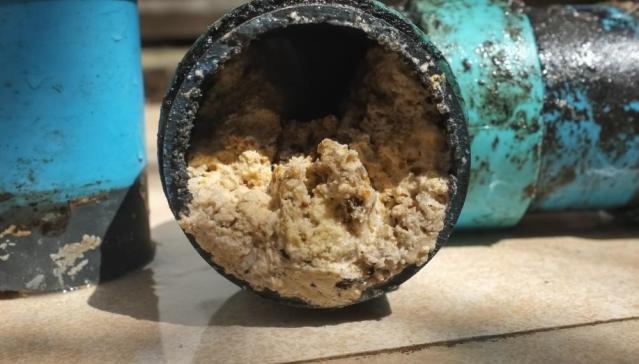What is FOG?
Fats, Oils, and Grease (F.O.G.) are common kitchen waste products from meat, cooking oils, or any other thick waste product. When thrown down sink drains, these waste products can stick to the walls of the drain pipes and, over time, cause build-up and blockages. This can be a costly problem, not only for the homeowner but for the environment as well.
Some examples of FOG include:
|
|
Why is it important to know about?
It is essential to understand the effects and damages that FOG can create, as these products can majorly impair sewer pipes. If there is enough buildup of FOG products in the sewer pipes, it will block the flushable products from passing through as normal and cause lines to back up into homes, into streets, and eventually into waterways. If FOG is dispensed into septic tanks, more frequent cleanouts will be required, and possible tank damage can occur. This kind of damage and cleanup is expensive and time-consuming for everyone involved.
sewer pipes, it will block the flushable products from passing through as normal and cause lines to back up into homes, into streets, and eventually into waterways. If FOG is dispensed into septic tanks, more frequent cleanouts will be required, and possible tank damage can occur. This kind of damage and cleanup is expensive and time-consuming for everyone involved.
Not only can this be problematic for homeowners, but FOG can also enter streets or yards, contaminating the environment and drinking water – a public health hazard. Again, these problems are costly and significant, making it essential to know what kinds of food waste to avoid putting down your drain.
How to avoid problems?
There are several ways to prevent FOG from entering your sewer pipes.
- Please dispose of your leftover cooking oil in a sealed container and place it in the trash.
- Food scraps such as meat products, butter, and thick creams should be in the trash instead of the sink.
- Use a paper towel to wipe away any leftover grease or oils on cookware before rinsing off in the sink and throwing away the used paper towel.
- Use a catch basket or screen over the sink drain to catch any food scraps and throw those scraps away into the trash, not the drain.
Other Helpful Links:
https://www.tceq.texas.gov/assistance/water/wastewater/fog/home_fog.html
